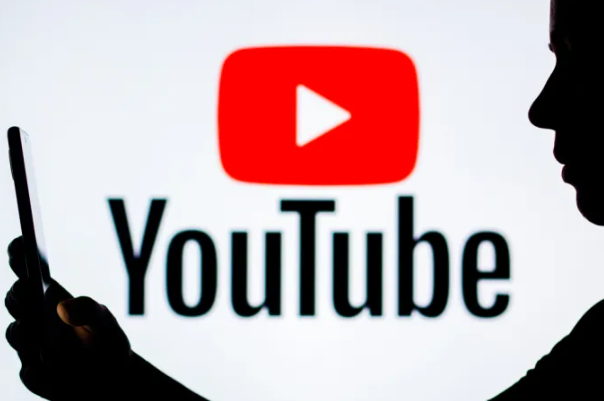YouTube’s Bold Move to Tackle AI Deepfakes

In an age where creating deepfakes has become absurdly easy,YouTube is stepping up its game. The platform has revamped its policy, making it simpler to report unauthorized AI-generated videos. This change reflects a shift in YouTube’s outlook — from mere content moderation to addressing pressing privacy concerns. The introduction of advanced AI tools has revolutionized content creation, but it has also brought about alarming misuse. However, YouTube’s updated reporting process aims to mitigate these risks and safeguard personal privacy.
New Privacy-Oriented Approach
YouTube has changed its policy to make it easier to report AI-generated deepfakes impersonating individuals. Previously, users had to report these as misleading content, but now they can use the platform’s privacy request process. This indicates that YouTube views deepfakes as primarily a privacy issue, not just one of content moderation.
The shift reflects the growing concern over the misuse of AI tools. Deepfakes can easily manipulate a person’s image or voice, leading to significant privacy violations. YouTube acknowledges this by updating its process, aiming to protect individuals’ likenesses better.
Factors in Takedown Requests
YouTube’s policy isn’t an automatic takedown for every reported deepfake. They consider various factors before removing content. If the video is identified as parody or satire, it may stay up, unless it crosses certain boundaries.
Moreover, the platform evaluates whether the person in the deepfake can be readily identified and whether the content targets public figures. For public figures, YouTube sets a higher threshold for takedown requests, to balance public interest and individual rights.
AI Tools and Copyrighted Music
YouTube is also addressing the deepfake issue concerning copyrighted music. With tools like Suno and Udio making it easier to create AI-generated music, there’s an increasing number of such deepfakes appearing on the platform.
YouTube plans to implement a similar privacy request process for these cases, ensuring that copyrighted music deepfakes can be reported and reviewed. This new approach aims to prevent misuse and protect the rights of original content creators.
The move highlights YouTube’s commitment to adapting its policies to the growing capabilities and potential abuses of AI technologies. By updating its procedures, the platform seeks to stay ahead of technological misuse that can harm individuals and creators alike.
Challenges in Enforcement
The effectiveness of YouTube’s new policy will largely depend on its enforcement. Simply having a process is not enough if takedown requests aren’t handled promptly and fairly.
Speed is essential in these cases. The longer a deepfake remains online, the more potential harm it can cause. YouTube must ensure that their review process is swift to mitigate damage effectively.
Ultimately, the success of these policy updates will be measured by how well they protect users and deter the misuse of AI for creating deepfakes. Continuous improvement and responsiveness to user reports will be key.
User Responsibility and Awareness
While YouTube’s changes are significant, they also place some responsibility on users. Individuals need to be aware of these new reporting options and understand how to utilize them effectively.
Education on identifying and reporting deepfakes is crucial. The more informed users are, the more efficiently they can help YouTube in identifying and removing harmful content.
Broader Implications for Social Media
YouTube’s new approach to handling deepfakes could set a precedent for other social media platforms. As AI technology evolves, other platforms might need to adopt similar measures to safeguard privacy.
This shift might encourage a broader industry standard, pushing social media companies to prioritize user privacy over content moderation.
If successful, YouTube’s policy could inspire more robust privacy-oriented strategies in the tech industry, emphasizing the importance of protecting individual likenesses in the digital age.
Future Developments
YouTube will likely continue refining its policies as AI tools and techniques evolve. Staying adaptable and responsive to new challenges will be crucial.
As deepfake technology advances, YouTube’s policies must evolve to address new forms of misuse. This will require ongoing effort and updates to ensure the platform remains safe for all users.
Final Thoughts on YouTube’s Policy Shift
YouTube’s decision to treat deepfakes as a privacy issue is a logical step in today’s digital landscape. It highlights the increasing need for platforms to protect their users from AI-induced privacy violations.
By updating its reporting and review process, YouTube is taking a proactive approach to a growing problem, reflecting the platform’s commitment to user safety.
YouTube’s proactive stance on deepfakes marks a significant step forward. By viewing these AI-generated videos as privacy issues, they address the misuse of personal images and information.
This policy update aims to protect individuals and copyright holders from potential harm, reflecting YouTube’s commitment to user safety. The success of this initiative will depend on robust enforcement and user awareness, ensuring the platform remains a safe space. Through continuous refinement and adaptability, YouTube seeks to stay ahead of technological abuse.





